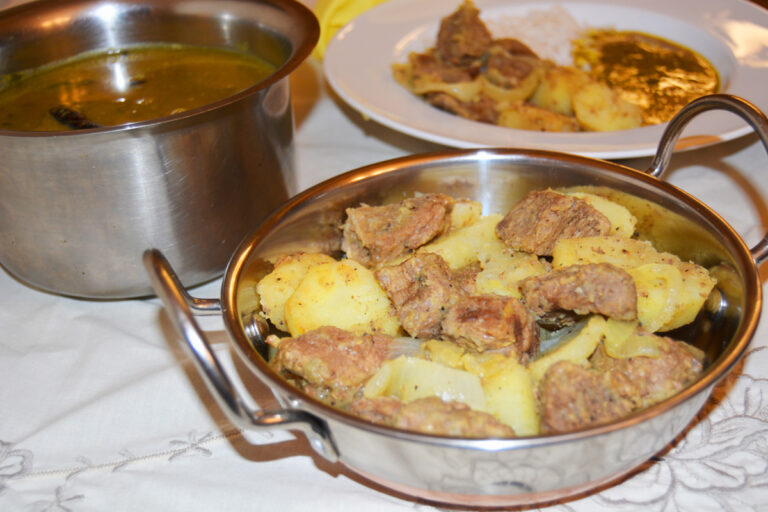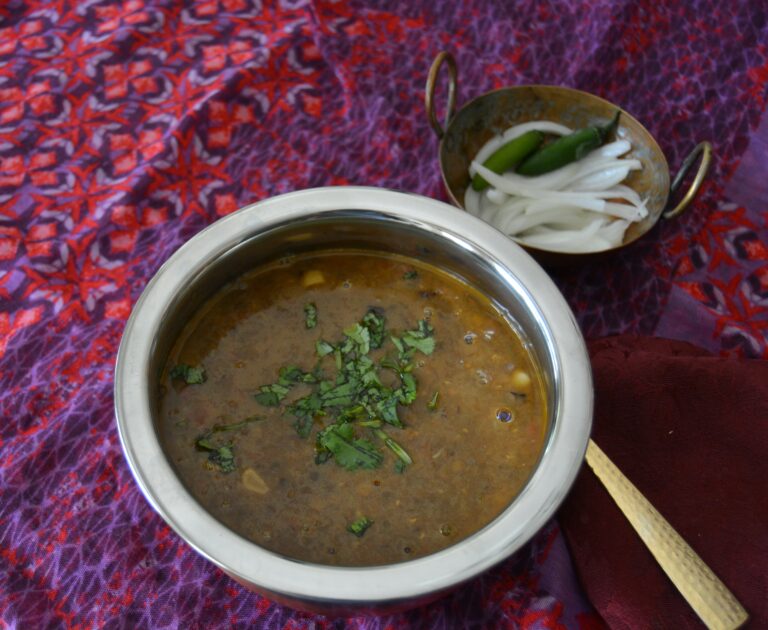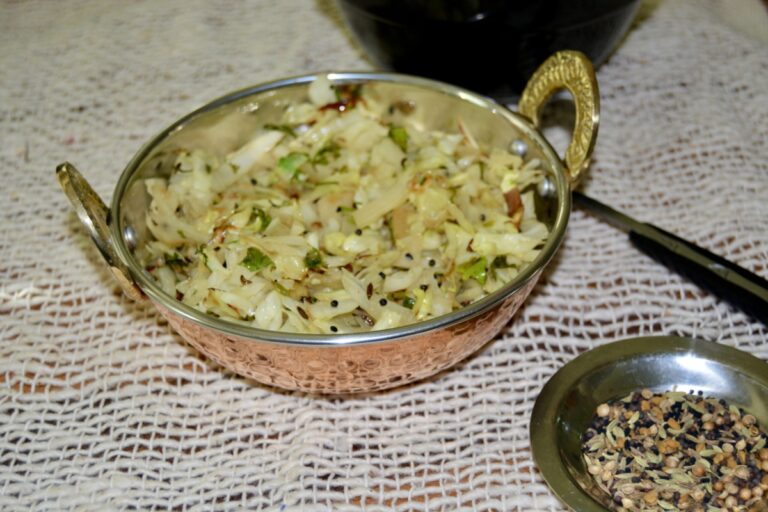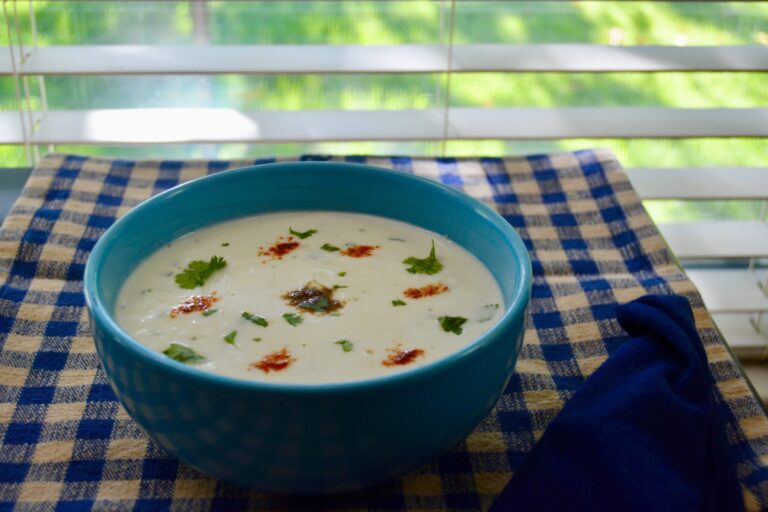Sunday was our day for pepper water. Plain boiled rice and pepper fry. Mama had a fixed menu for each day of the week which she would vary every now and then. Pepper Fry is what went with pepper water, a South Indian specialty. The Pepper Fry is made out of goat meat chops, potatoes, and onions. I find it easier to make with stew meat. This is a very versatile and simple dish that can accompany Indian or Western meals.
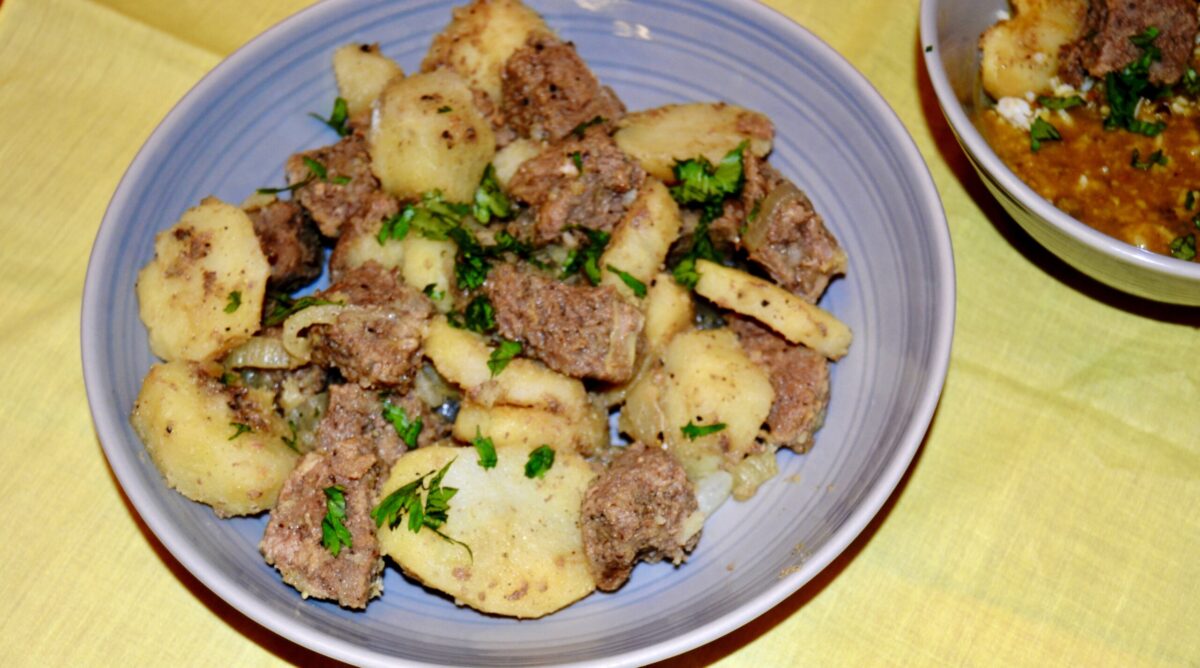
Pepper Meat Fry
Ingredients
- 1 lb stew meat (beef, goat, or lamb )
- 1 large onion
- 2 medium potatoes (peeled and sliced as thick as the onions)
- ½ tsp coarsely ground whole pepper (you could add more if you like)
- 1¼ tsp salt
- 3 tbsp cooking oil
- Water (as needed)
Instructions
- Wash and drain the meat. Pound the meat pieces with a meat mallet a few times.
- In a medium-sized mixing bowl add the meat, pepper, and salt. Rub together well so that the meat is nicely coated.
- Heat oil on medium heat in a wok or broad skillet.
- Add the meat, pepper, and salt. Sauté the meat until it has a nice glaze. Do not brown it.
- Add 2 cups of water, cover, and cook till almost done. Approximately 30-35 minutes.
- Add additional water if it is drying out while cooking. Test the meat with a fork or skewer. The meat should be tender and almost done. Turn off the heat.
- Uncover the meat and arrange a layer of the sliced potatoes on top.
- Now add a layer of the sliced onions. You will need at least half a cup of water remaining. If not, add an additional half a cup of water to the meat to cook the potatoes.
- Cover and cook on medium-low heat for 10-15 minutes until the potatoes are done.
- Stir a couple of times carefully during cooking to ensure the meat is not sticking to the bottom of the pan and the potatoes are not overcooked.
- Serve the pepper fry with pepper water and rice.
- You can use it in a wrap or a main dish with salad and bread.
Notes
I am leafing through Mom’s cookbook. It looks like she picked up some recipes when visiting Dad’s sister in Patiala. Mom was a recipe collector (maybe less of a junkie than I am!). You can almost tell whom she had visited and stayed with by the recipes in her book. I decided to try one of them. This recipe is from her sister-in-law. Auntie Norma was Dad”s elder sister. She helped Dad when he was going through college before joining the army, and he was ever grateful for that.
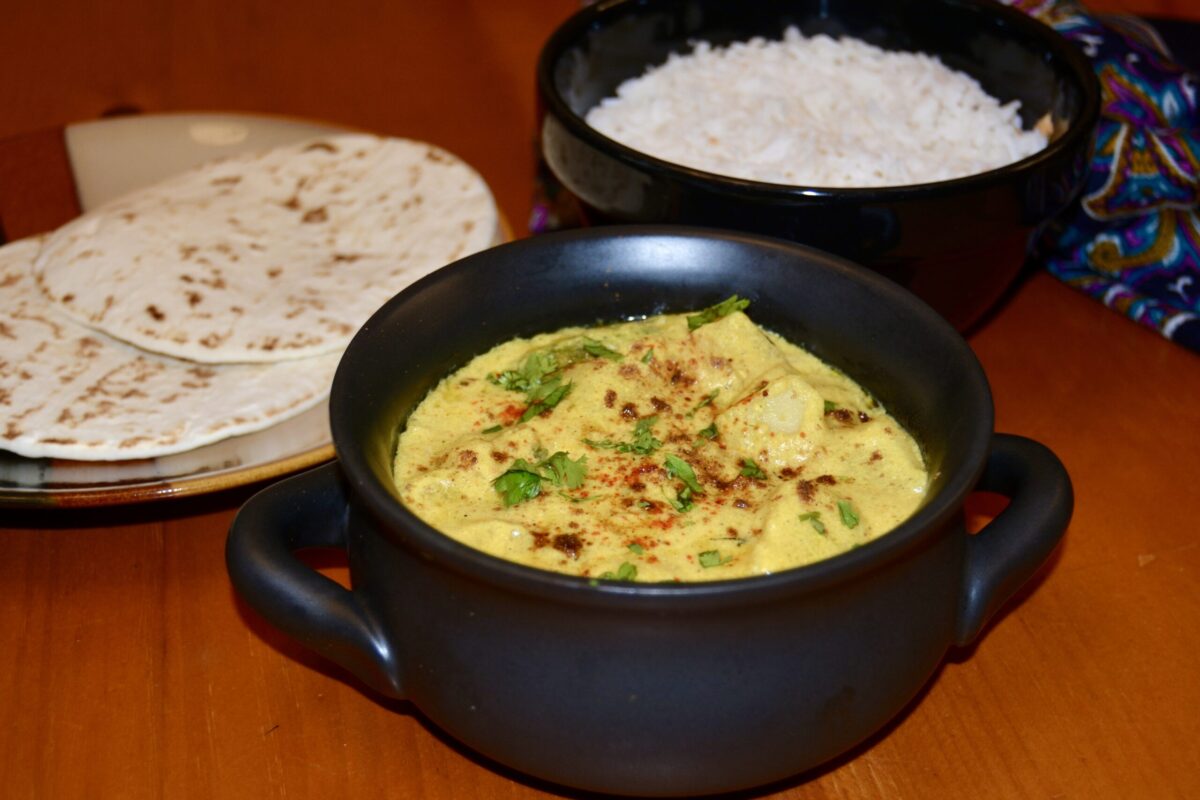
Dahi Allu (Potatoes in a Creamy Yogurt Gravy)
Ingredients
- 6 medium potatoes (boiled, peeled, and quartered into bite-size bits )
- 1 cup plain yogurt (whole or lowfat)
- ½ cup water
- 1 tbsp chickpea flour (besan)
- 1 small green chili (or to your taste)
- ½ tsp cumin seeds
- 2 tsp coriander powder
- 1 tsp cumin powder
- ¼ tsp black pepper powder
- ¼ tsp turmeric powder
- ½ tsp red chili powder (optional, or to your taste)
- 1 medium onion (finely chopped - about ½ to ¾ cup)
- 2 tsp ginger paste
- 2 tsp garlic paste
- ½ cup cooking oil (I like canola, peanut, or vegetable for frying)
- 1 tsp salt (or to taste)
- 2 tbsp fresh chopped coriander (cilantro)
Instructions
- Mix the yogurt with half a cup of water and the chickpea flour. Blend until smooth, and set aside.
- Add all the spice powders to a small bowl and mix them together. Set aside.
- In a medium-sized pot, pour in a 1/2 cup of oil. Deep fry the potatoes on high heat. You may have to do it in batches and add more oil, if necessary. Fry until the potatoes start to brown at the edges, about 7-8 minutes. Drain on paper towels and set aside.
- In the same pot, remove excess oil until about 2-3 tablespoons are left. Heat on medium-high. Add the cumin seeds and let them crackle for 30 seconds.
- Add the onions and fry until half-brown. About 7-8 minutes.
- Add the ginger and garlic paste and fry for 1 minute, then add all the dry masala powders. Stir and sauté for another minute or two.
- Add the yogurt mixture slowly, stirring as you go. Cover and let simmer for about 5 minutes.
- Add the potatoes, stir carefully, and let simmer for another 5 minutes for the potatoes to absorb some of the gray. If the gravy gets too thick, add about a half cup of hot water to thin it out. Do not make it too watery, as this dish needs a reasonably thick gravy.
- Turn the heat off. Pour the Dahi Allu into a serving dish and sprinkle with the chopped cilantro.
- Serve with roti, naan, paratha, boiled rice, or a simple pilaf.
Notes
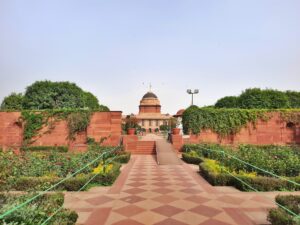 My husband and I are returning from Ambala. It was two weeks after our wedding, and we had made the trip to visit all the in-laws who could not attend. We caught the evening bus home. By the time we reached New Delhi, it was very late. All the restaurants were closed, and we knew the kitchen at Rashtrapati Bhavan (our residence at the time, as my husband was the Air Force Aide de Camp to the President) would be closed. I was starving!
My husband and I are returning from Ambala. It was two weeks after our wedding, and we had made the trip to visit all the in-laws who could not attend. We caught the evening bus home. By the time we reached New Delhi, it was very late. All the restaurants were closed, and we knew the kitchen at Rashtrapati Bhavan (our residence at the time, as my husband was the Air Force Aide de Camp to the President) would be closed. I was starving!
So we stopped at a dhaba (roadside eatery). It was a little shack with a few wooden tables and chairs. Nothing fancy. Seedy enough for me to worry about germs, but too hungry to care! The dal was simmering in a large pot and smelled wonderful on that cold winter night. The dhaba owner accommodated us at a table close to a small electric heater. We fortified ourselves with hot dal and equally hot tandoori rotis, washed down with a kullar (clay cup) each of hot, sweet, and milky cardamom tea.
Dinner never tasted so good!
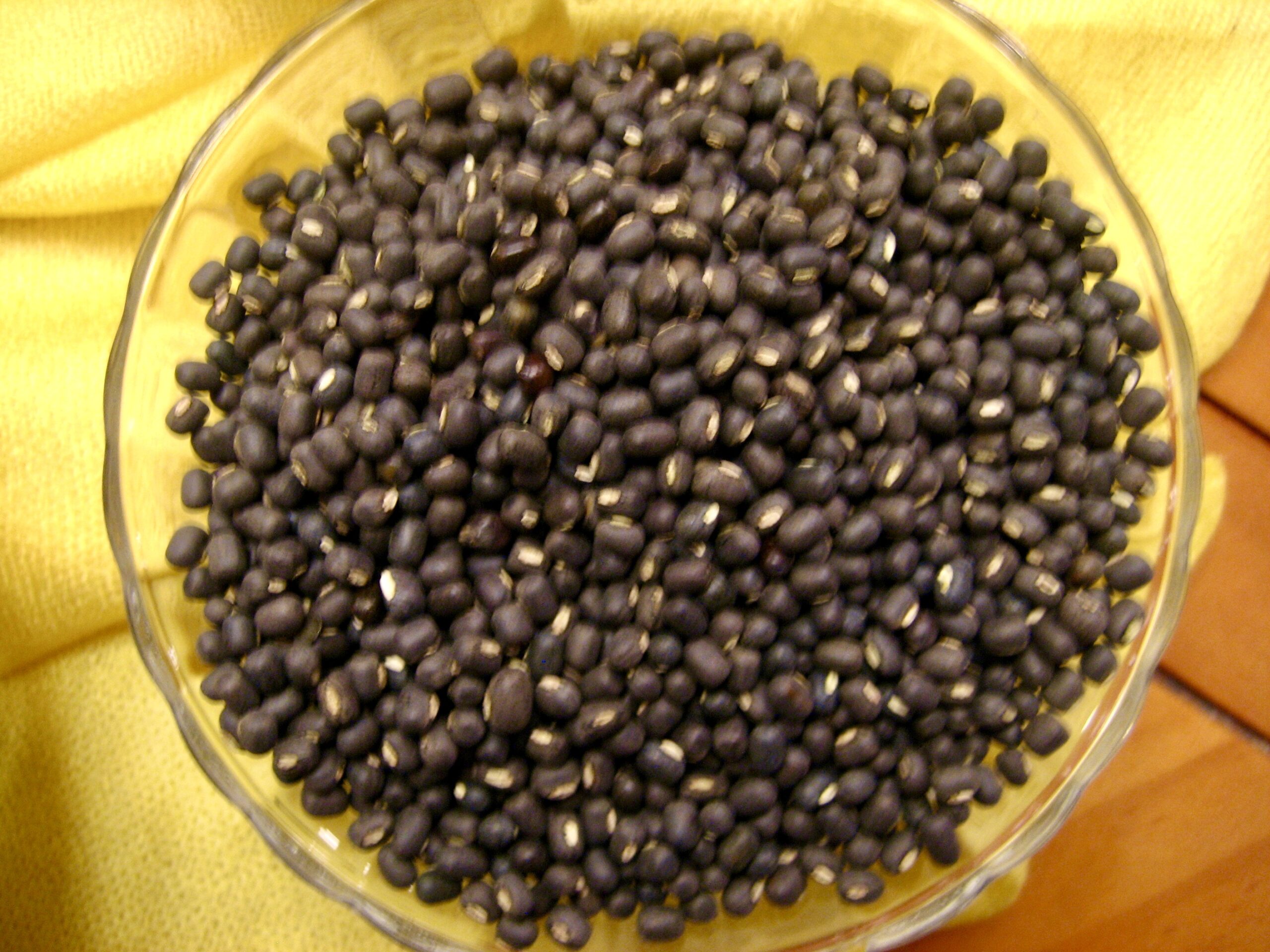
Maa Sabut Dal / Urd Sabut Dal (Black Gram Dal)
Ingredients
- 2 cups whole black gram (picked, cleaned, and washed through a strainer)
- 2 medium dried red chilies, whole (one, if you have a weak stomach)
- 2 tsp fresh ginger (chopped finely)
- 2 tsp fresh garlic (chopped finely)
- salt (to taste)
- 6-8 cups water
Tadka (Tempering)
- 1 tbsp cooking oil
- ½ cup onion (chopped finely)
- ½ tsp cumin powder
- 1 tbsp garam masala
Garnish
- 1 tbsp fresh coriander (cilantro) (chopped finely)
- 1 tbsp desi ghee or butter
Instructions
Preparation
- Picked, clean, and wash the lentils through a strainer. Let them soak for 30 minutes.
To Cook
- Put all ingredients in a stew pot, cover, and bring to a boil on medium heat.
- Cook the lentils, occasionally stirring, until they are tender and slightly blended, but not mushy. Approximately 45min. If the water evaporates too much, add more hot water. Set aside.
- You can also use a pressure cooker to cut down the cooking time. Just follow the instructions for cooking time for beans. Normally, I undercook the lentils and then continue to boil them to the consistency I like.
Tadka (Tempering)
- Heat oil in sauté pan. Add chopped onions and saute for about 7-8 minutes.
- When the onions are three-quarter brown, add tomatoes and sauté for another 3 minutes.
- Add the cumin and garam masala powders and give them a quick stir.
- Pour the seasoning into the cooked dal. Now put the dal back on the burner, cover, and let it simmer for another 5-10 minutes so it can absorb the tadka.
Garnish
- Garnish with fresh coriander before serving and desi ghee or blobs of butter.
- Goes well with roti, flat breads, or an Indian meal.
Notes
–Photo by Abhishek Sagar on Unsplash
As vegetables go, cabbage has never really been a favorite of mine, except in coleslaw. However, here is a recipe I learned from the wife of one of my husband’s fellow officers when he was attending a year’s course at the Defence Services Staff College (DSSC) in Wellington.
Wellington is a town that lies in the NW corner of the Indian state of Tamil Nadu. At an elevation of a little over 6000 feet, it is breathtakingly beautiful, with a climate described as ‘salubrious’ by the DSSC. It was a fun time for us wives. There were many get-togethers, cocktail and dinner parties, resulting in many recipes exchanged.
Gobi Panch Pooran translated means cabbage seasoned with five spice seeds. This cabbage recipe is so easy and tasty that it has become a go-to when I need to fix something in a hurry.
It tastes good with rice and dal or as a wrap in a roti, pita bread, tortilla, or paratha.
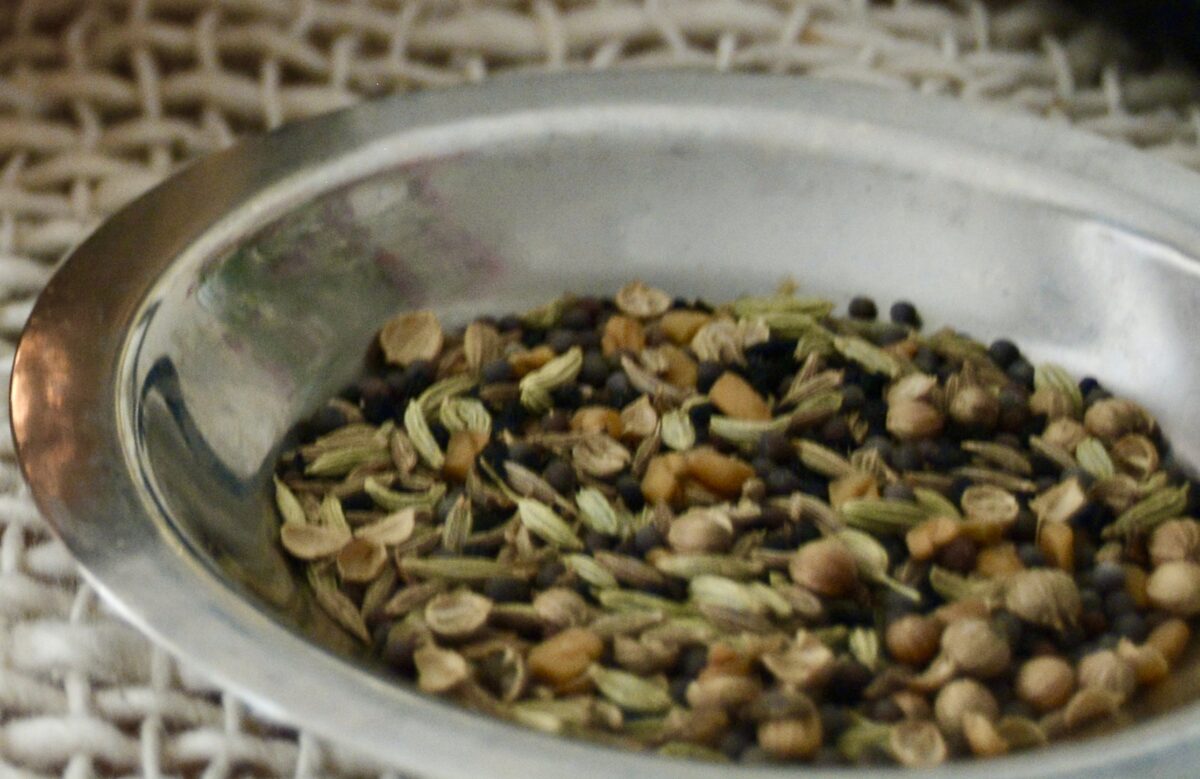
Gobi Panch Pooran (Spicy Cabbage)
Ingredients
- 1 small cabbage head, chopped (If you wash the cabbage after chopping it, be sure all the moisture from it is drained. I prefer to discard the top leaves and wash whole before chopping.)
- 1 tbsp cooking oil
- ¼ tsp Panch Pooran Seasoning (see recipe in notes)
- 2 medium dried red chilies OR 1 green Serrano chili OR ¼ tsp red chili flakes
- salt to tasate
Panch Pooran Recipe for Tadka (Tempering)
- 1 tsp mustard seed
- 1 tsp coriander seed
- 1 tsp fennel seed
- ½ tsp fenugreek seed
- ½ tsp onion seed (you can substitute 1 tsp of cumin seed for the onion seed)
Instructions
Panch Pooran Recipe for Tadka (Tempering)
- Toss all the ingredients together and store them in a jar.
To Cook
- Heat oil in a wok or a deep saucepan over medium heat.
- Add the 5 seeds seasoning, and stir for 15 seconds being careful not to burn the seeds.
- Add the cabbage and salt. Sauté for about 5-8 minutes stirring occasionally. I do it for less time if I want it more crunchy.
- Partially cover the cabbage so that the residual steam does not make the cabbage soggy.
- Remove from heat and pour into a serving dish. If you are cooking ahead and you are done fixing the cabbage, leave it half covered so that the steam escapes and the cabbage does not make the dish soggy.
Notes
In Indian cooking, vegetables can be cooked in a wide variety of ways depending on your taste. My mother-in-law would fix them without onions and tomatoes. They tasted just as good with or without. This recipe was morphed from Ratna Chachi. In India, each relationship is defined. Your father’s younger brother is your Chacha, and his wife is your Chachi. Nandi Chacha was my husband’s uncle. He owned a catering business which the best in New Delhi. Their food and service were outstanding. His sons are carrying on his legacy under Harisons Nandi Caterers, and they are definitely the best!
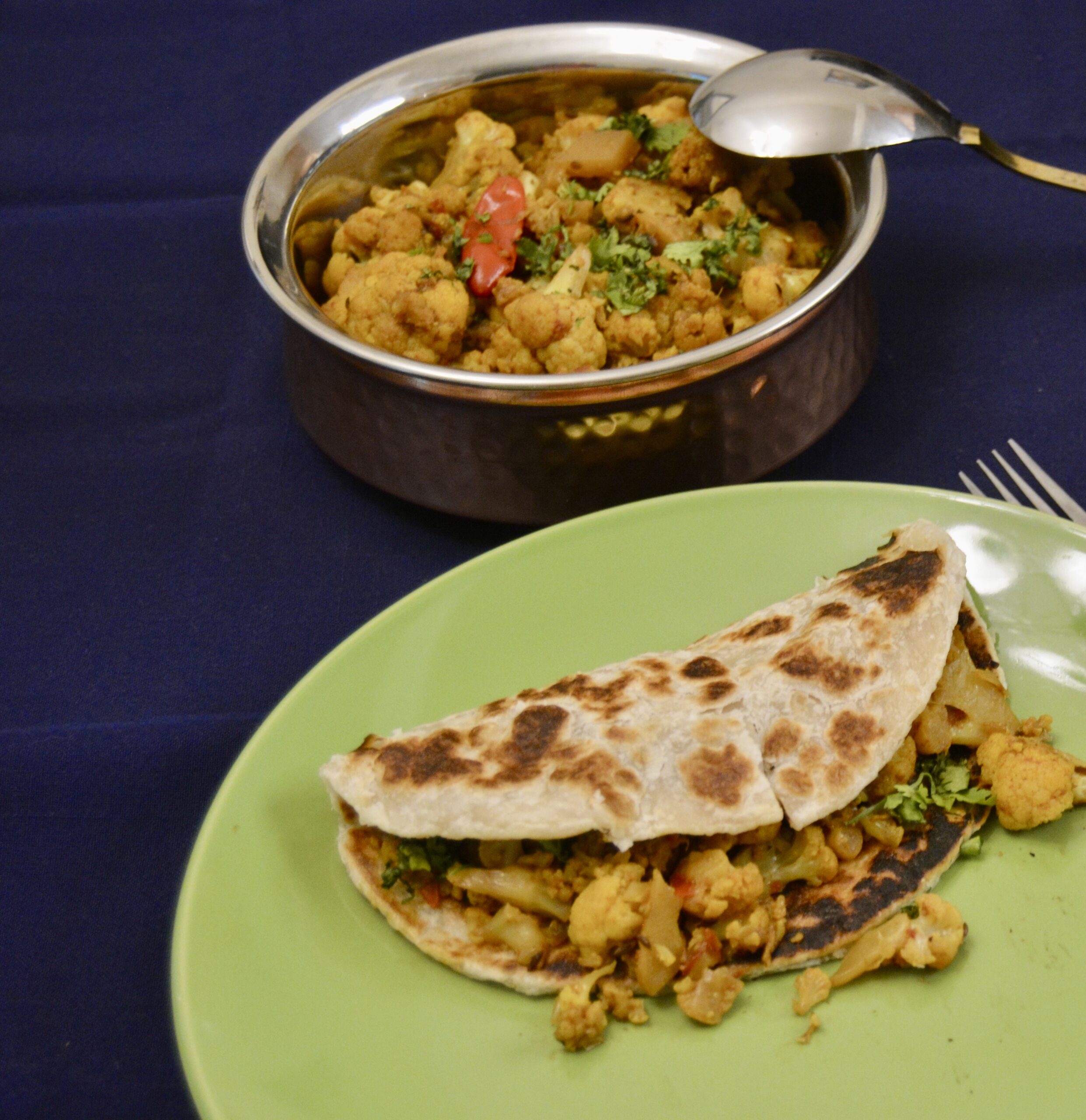
Phool Gobi Sabzi (Spicy Masala Cauliflower)
Ingredients
- 1 head cauliflower (cut into bite-sized pieces, washed and drained )
- 1 whole red or green chili (optional)
- 1 medium onion (chopped fine)
- 1 large tomato (chopped fine)
- 1 tbsp grated fresh ginger
- 3 tbsp cooking oil
- 2 tbsp fresh green cilantro (chopped fine)
- ¾ tsp cumin seeds or ajwain seeds (optional)
- ½ tsp tumeric powder
- ½ tsp red chili powder (optional)
- ½ tsp garam masala
Instructions
- Heat oil in medium heat in a wok (preferred)or large skillet. Add the whole chili.
- When it starts to sizzle, add the cumin seeds. Let the seeds splutter for 30 seconds, then add the ginger.
- Sauté for 30 seconds and add the onions. Sauté the onions until they are half brown, about 5 mins.
- Add the turmeric, cumin, and chili powders. Give them a quick stir and add the tomatoes.
- Sauté until tomatoes start to curl. About 3-4 minutes. Add the cauliflower and stir until all the flowerets are coated with the masala mixture.
- Sprinkle a tablespoon of water over the vegetables. Cover and cook on low flame for about 3 minutes.
- Remove the lid, stir, then cook uncovered until all the moisture evaporates and the oil starts to come up on the sides.
- Stir occasionally until the cauliflower is done. Turn off the heat.
- Sprinkle the garam masala on top and toss a few times so that the masala is well incorporated into the cauliflower.
- Transfer to serving dish and garnish with fresh cilantro.
- Serve as a wrap with paratha, roti, or any flat bread like pita or naans.
- This sabzi is also served as a side with a complete Indian meal of main dish or/and dal, roti, rice, raita, etc.
Notes
In the southern part of India, where coconut grows in abundance, it finds its way into many dishes. Fresh or dried, grated or ground, it adds flavor to the dish.
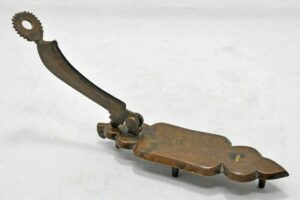 I remember the old-fashioned scraper in the kitchen used when I was a kid. It was a metal blade shaped like a scythe, at the end of which was a circular metal disk with sharp teeth. The metal blade was mounted on a square block of wood. To scrape the coconut, you had first to remove the husk, then split the brown kernel in half. Next, you set up the scraper on the floor with a bowl or tray to catch the grated coconut. You sat on your haunches on the floor and steadied the board with the weight of one foot. Holding the coconut half against the scraping metal, you would move it back and forth across the grate, and the white meat would fall into the receiving bowl or plate. The metal teeth were sharp, and you had to be careful. The best part was the sharp blade was used to cut meat and poultry. It was always fascinating to watch the cook doing it. We were not allowed near the gadget, of course!
I remember the old-fashioned scraper in the kitchen used when I was a kid. It was a metal blade shaped like a scythe, at the end of which was a circular metal disk with sharp teeth. The metal blade was mounted on a square block of wood. To scrape the coconut, you had first to remove the husk, then split the brown kernel in half. Next, you set up the scraper on the floor with a bowl or tray to catch the grated coconut. You sat on your haunches on the floor and steadied the board with the weight of one foot. Holding the coconut half against the scraping metal, you would move it back and forth across the grate, and the white meat would fall into the receiving bowl or plate. The metal teeth were sharp, and you had to be careful. The best part was the sharp blade was used to cut meat and poultry. It was always fascinating to watch the cook doing it. We were not allowed near the gadget, of course!
These days they have coconut graters that you can mount on the kitchen counter. It has a handle to swivel the grater head and scrape the meat off the coconut. It does a pretty effective job. If you cannot get a fresh frozen pack of coconut meat and do not own a scraping gadget, buy a whole brown coconut from the grocery store with the husk removed. Shake it to see if you can hear the water swish inside. That means it is still fresh. Knock it against a hard surface to split it in half. You might have to break it into two pieces to do that. Cut away the outer brown part and use a standing grater. Grate the white coconut meat only.
Here is a raita made with coconut, which we enjoy with any pilaf.
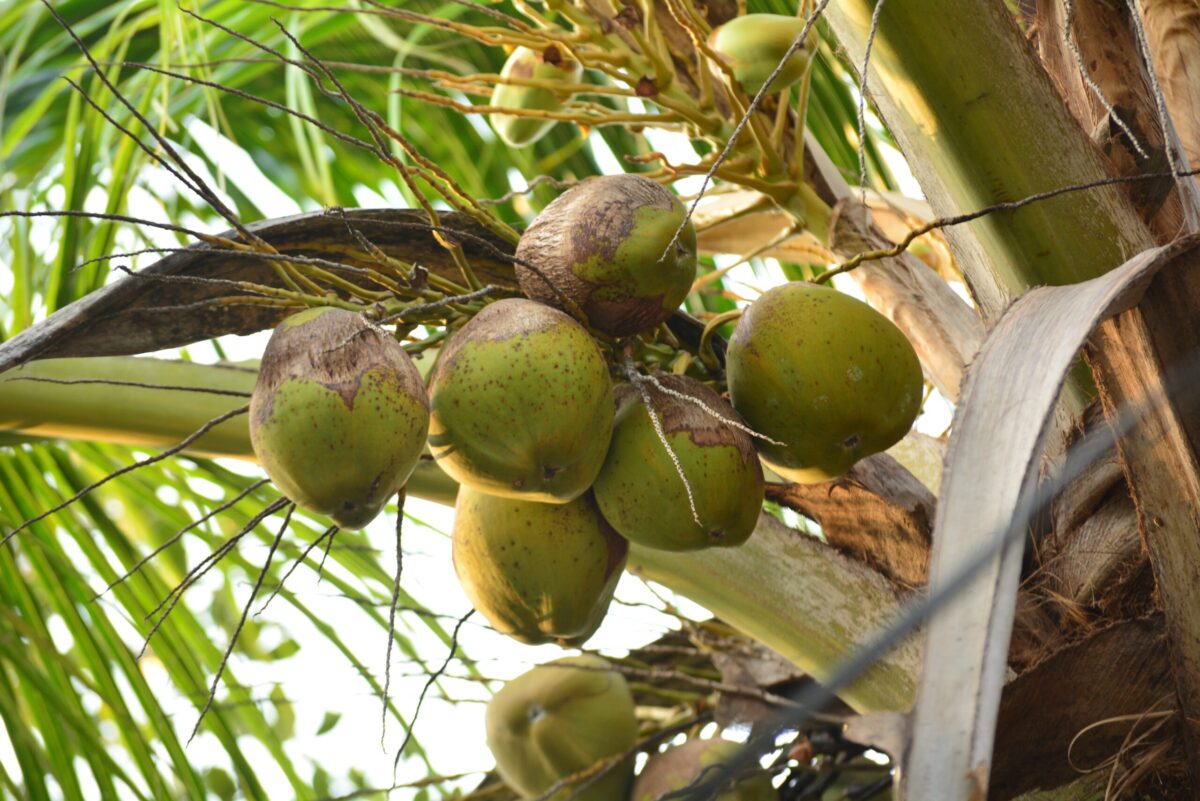
Coconut Raita
Ingredients
- ¾ cup freshly grated coconut (Roasted ground cumin and red chili powder (paprika orCayenne) for Garnish)
- 1½ cup plain yogurt (whole, lowfat, or fat free)
- ½ small onion (chopped fine)
- 1 medium Serrano chili (to your taste, chopped fine)
- 2 tbsp fresh green cilantro (chopped fine)
- ½ cup water
- salt (to taste)
- Dash roasted ground cumin and chili powder (paprika or cayenne) (for garnish)
Instructions
- In a medium bowl, beat the yogurt with water and salt until smooth.
- Add the rest of the ingredients and mix well.
- Pour into a serving dish and garnish with the roasted ground cumin, pepper, and chili powder.
- Serve with an Indian meal of Pilaf or plain boiled rice, dal, sabzi, or curry.
- As with the cucumber raita, it can also eat it as a snack.
Notes

